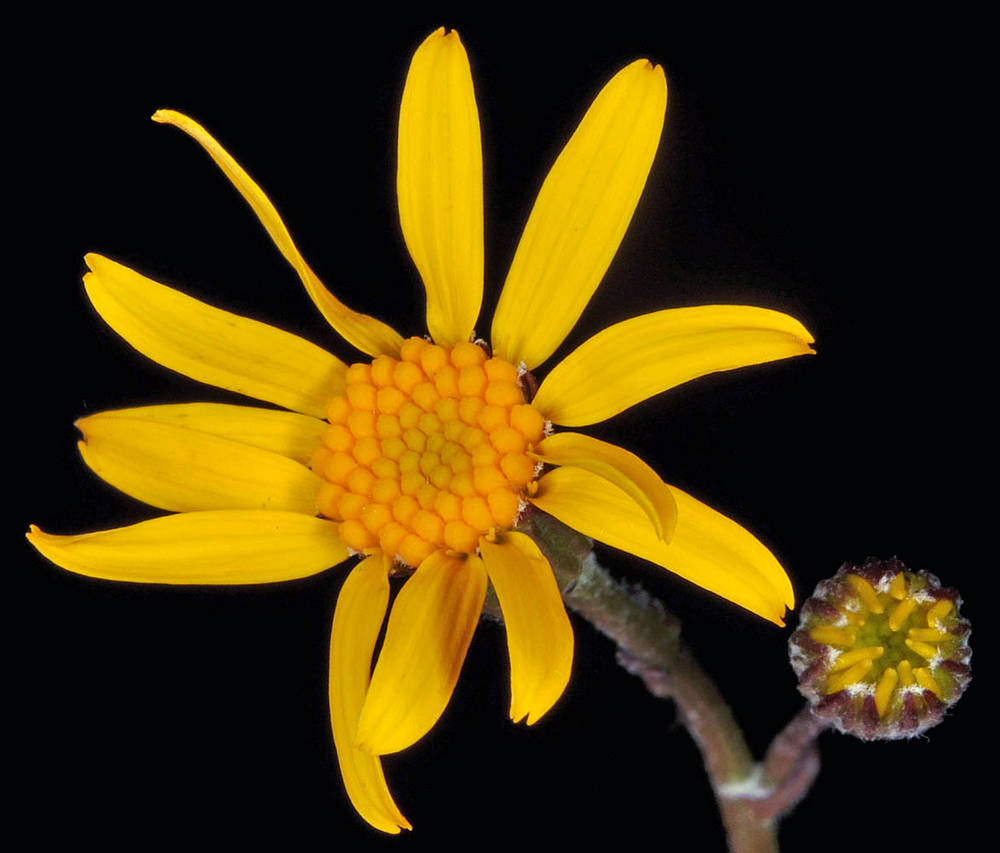Packera hesperia
Packera millefolium
serpentine groundsel, Siskiyou butterweed, western ragwort
1, glabrous or sparsely tomentose.
blades ovate, oblanceolate, or spatulate, bases tapering, sometimes obtuse;
margins entire, subentire, or dentate, petiolate.
lower similar to basal; middle and upper abruptly reduced and bract-like, sessile and clasping.
cylindric;
bractlets narrow, red-tinged.
(8)13;
rays 6–10+ mm; deep yellow.
35–50+;
corolla tubes 2.5–3.5 mm;
limbs 3–4 mm.
(13)21, green;
tips red or dark red;
surfaces densely tomentose basally.
conspicuous.
1.5–2 mm, glabrous;
pappi 5–6 mm.
1–4+; in corymb-like arrays;
peduncles densely lanatetomentose;
bracts red-tinged.
=46.
Packera hesperia
Packera millefolium
Serpentine, open woodlands. Flowering Apr–Jun. 300–1400 m. Sisk. CA. Native.
Until collections of this species were made in Del Norte County in California, Packera hesperia was known only from two counties in southern Oregon. It has since been listed as a species of conservation concern in California.
Debra Trock



